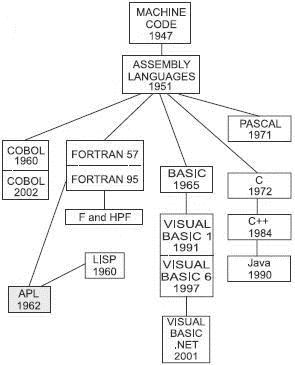Книга: Introduction to Microprocessors and Microcontrollers
APL
APL
The letters APL stand, reasonably enough, for ‘A Programming Language’. This is another interpreted language developed by IBM around 1962 and is only used for numerical data. It is a curious mixture of Lisp and Fortran. It combines the function orientation of Lisp with the terse procedural mathematics of Fortran (see Figure 10.12). It allows user-defined functions and has a large library of solutions to common problems. Most people would agree that given a choice, APL is not the language to learn if you are in a hurry. For example, the four basic functions of add, subtract, multiply and divide are present but even here, life is not easy. What would you expect the result of 2*3 to be? Well, it’s not 6. This would be written as 3?2 and 2*3 is actually 2? or 8. The statement: Value?4––2 four take away minus two giving an answer of plus six. Notice the different symbols for minus and a negative number. Other mathematical functions like sin, cos and tan are replaced by special symbols that do not appear on standard keyboards.

Figure 10.12 A programming language
Easy, it is not. The good news is that, once mastered, it provides fast compact programs but the many cryptic statements would need to include many comments to help another person to understand your program.
- Apli Paper столкнулась с дилеммой
- 2.8. Контрольные вопросы
- Редактирование начального сообщения Telnet
- Другие функции кучи
- Синхронизация куч
- Восстановление Windows
- 14.4. Динамическое распределение пользователей
- 15.5. Файлы трассировки
- 2.3. Запуск клиента
- 11.4. Настройка инфраструктуры устройств вывода
- Тест на пропуски
- Операции увеличения и уменьшения: ++ и --




